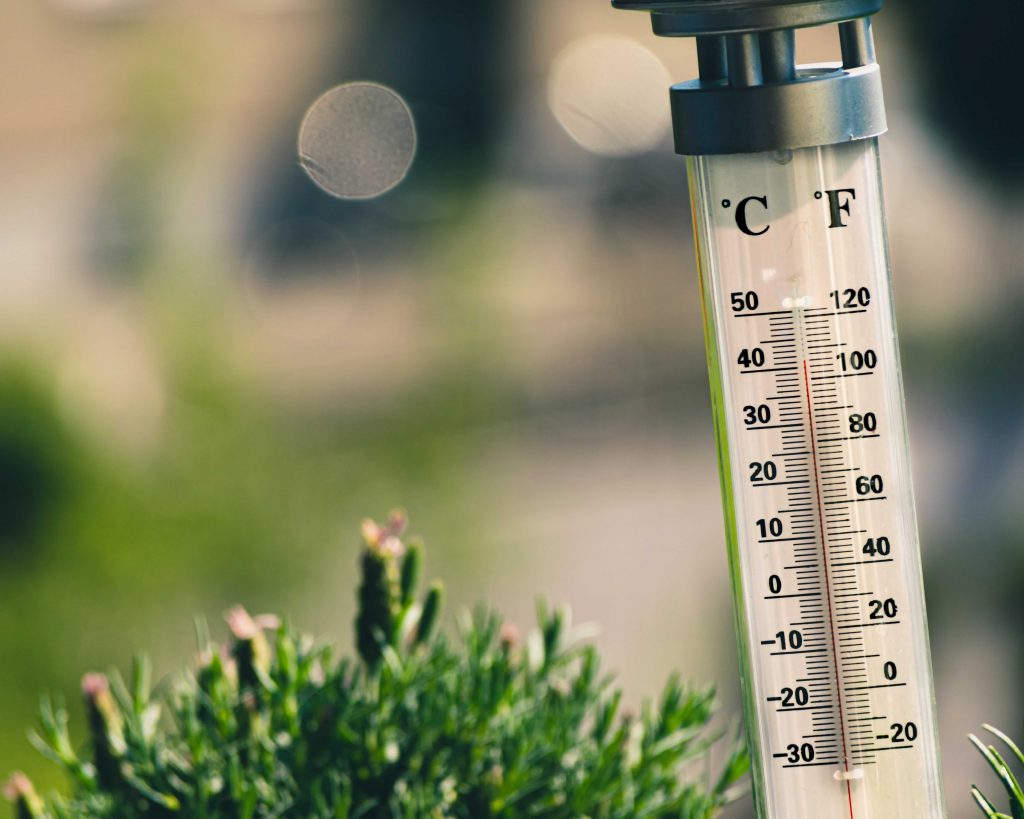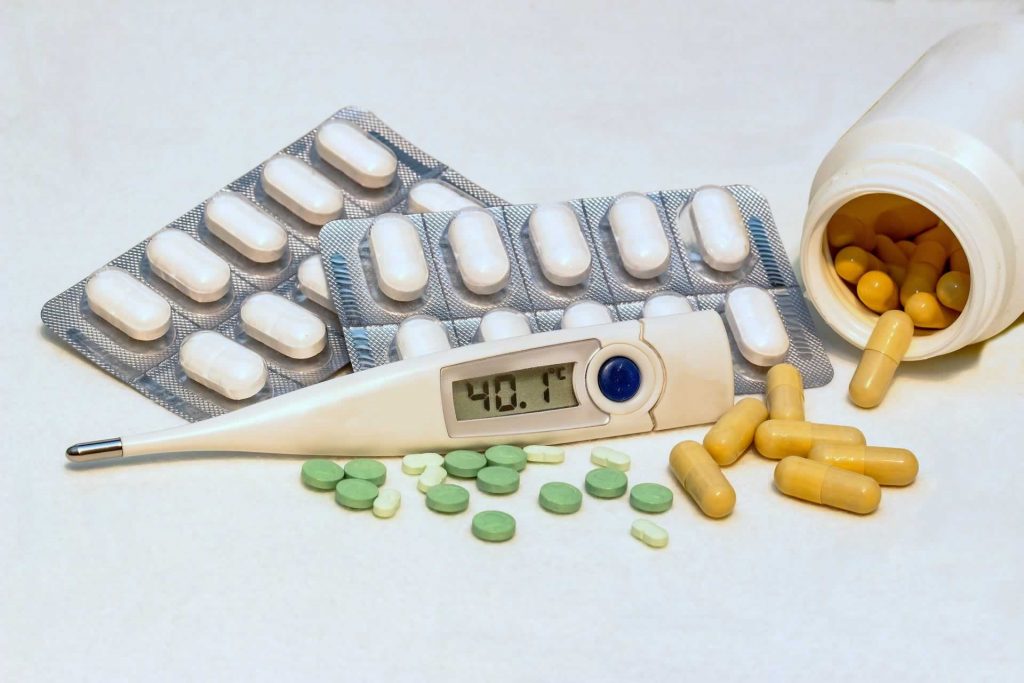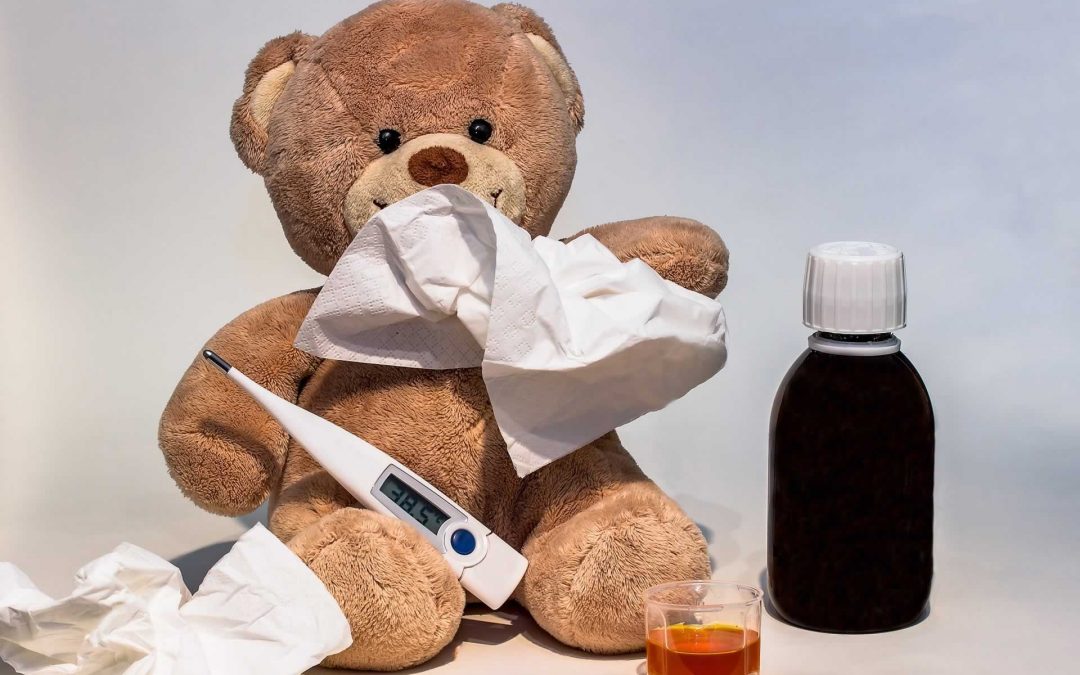Fever is one of the main reasons that parents seek out help from a doctor. While it is important for infants younger than 3 months old to be checked out as soon as possible if they have a fever, in otherwise healthy children older than 3 months it is a positive sign that their immune system is working as it should be.
Conventional guidance on fevers is that they are bad and need to be lowered. In the minority of cases that can be necessary but, looking at it from a vitalistic philosophy there is another way.
First, let us define a normal body temperature
Most people think that 37°C is normal but this doesn’t account for individual variations and that children tend to run hotter than adults. Eating hot foods, exercise, excess clothing (or synthetic clothing), hot weather, teething and an overheated room can all influence body temperature by a degree or two. Your body temperature also fluctuates throughout the day with it being lower at the start of the day and rising in the late afternoon towards the evening. For females, your menstrual cycle can also influence temperature. So, anything between 36°C and 38°C is considered normal. A body temperature of above 38°C is considered to be a fever and a temperature of over 41°C considered a very high fever. In most – not all – cases, there is no need to worry that your child’s temperature is going to rise above that as, during most infections, the brain keeps body temperature at or below 40°C.

Fever is not something to fear
Fever isn’t an illness but it is considered a symptom of one. Fever is a healthy immune response from your child’s body. The temperature of the fever is related to whatever the body is fighting. The temperature that the body settles on is the optimal temperature required to kill that particular pathogen that is causing the infection, whether it is bacterial, viral or otherwise. The temperature the body reaches does not indicate the severity of the situation. Some parents try not to take their child’s temperature as it causes unnecessary worry and rely on how the child is acting instead. Some children can be symptomatic with very low temperatures and others can run a high temperature and still be running around happily, climbing and swinging from trees.
Is lowering the fever the best choice?
Medications that lower a fever is designed to suppress what the body is innately designed to do. It may cause the infection to withdraw deeper into the body and get worse and can prolong the infection rather than speed up the process. There is also the long-term health consequences associated with the use of these medications.
If you look at it from a vitalistic perspective, fevers generally do not need to be treated with medications unless your child is experiencing discomfort, is distressed or has a history with febrile convulsions. Most parents choose to medicate a fever because of their own anxieties or a misunderstanding of fever rather than medical necessity. If your child is eating and sleeping well, keeping hydrated and has periods of playfulness, they probably don’t need any medications. Reminder: body temperatures tend to be higher in the late afternoon so this is generally when a fever will rise slightly.
Fevers in themselves have a bad reputation when it comes to febrile convulsions. It is often not the high temperature itself that can lead to the convulsion but the dramatic rise and/or drop of temperature. Any time a fever is lowered artificially it drops your child’s temperature quickly, your child’s body becomes a welcome environment for the pathogen that the body is trying to fight off, then their body’s innate intelligence will try to get back up to that optimal temperature to kill the pathogen. This is when there becomes a risk of febrile convulsion.
Medications can also mask your symptoms leading to you returning to normal life too soon and stressing the body when it still needs more time to rest and recover.
With most fevers, rest and lots of fluids are all that is needed. However, medical assistance should be sought out if an infant younger than 3 months has a fever or if a fever exceeds 41°C.

So, what can you do if your child has a fever?
- Observation – Give it some time before taking any action.
- Hydration – Encourage liquids even if your child doesn’t feel thirsty. If breastfeeding, then offer often.
- Clothing – Dress according to your child’s cues using natural fibres.
- Food – Take your child’s cues on food, if they don’t want to eat then leave it.
- Output – Urinating at least once every 8 hours (ideally every 3-4 hours) or 8-10 wet nappies a day.
- Skin-to-skin – Regardless of your child’s age, getting skin-to-skin with them will provide them with comfort and help them to regulate their body better.
- Sleep – Let your child rest, the body does it’s best repair work while we are sleeping.
Finally, remember that letting the fever run its course could be your best choice for your child to fight off an infection but you should also take measures to boost their immune system so that their body is able to adapt more efficiently to invading pathogens.

References:
Peak Chiropractic Centre located in Claremont are family-friendly chiropractors focused on relieving aches, pains and posture correction. We offer in-house X-Ray facilities.

